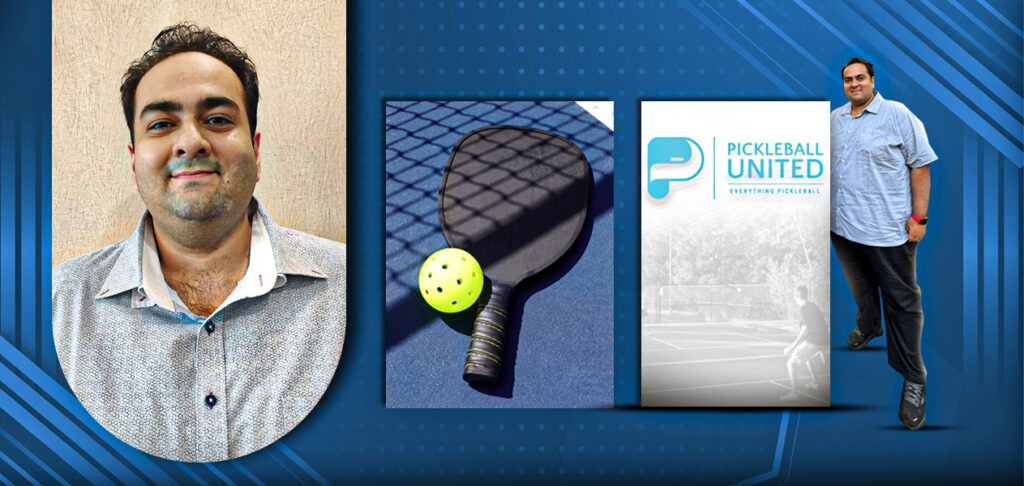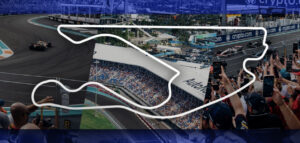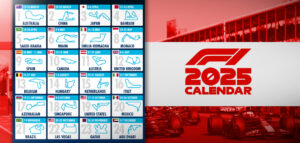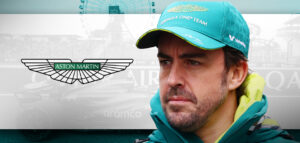What can an F1 driver get penalised for? Penalties have replaced the daily Netflix gossip and taken precedence in our lives. It seems like every race weekend, there are new and contentious penalties being dished out and decisions made that alter the narrative of the 2021 world championship with each passing race. So, what better way than to bring a new piece on the different penalties and how a lack of clarity has resulted in controversies and finger-pointing throughout the F1 paddock.
Although there are many technical regulations and when breached, the teams and the respective driver for that car gets penalised accordingly. For this instance, much of the talk, as of late, has been regarding the on-track incidents, and the subsequent irregularity in dishing out penalties and the evaluation of each incident by the stewards, and the race director to some extent. Here we take a look at some of the penalties as per the F1 sporting regulations while comparing them with some of the recent on-track incidents and the verdicts that followed.
In the event of an on-track incident, the Race Director may report it or any suspected breach of the sporting regulations or the Code (an “incident”) to the stewards. While the stewards may also investigate an incident noted by themselves. And it shall be at the discretion of the stewards to decide if any driver involved in an incident should be penalised. Unless it is clear to the stewards that a driver was wholly or predominantly to blame for an incident, no penalty will be imposed – with the Race Director having no final say in this. If an incident is under investigation by the stewards, a message informing all competitors which driver(s) are involved will be sent via the official messaging system – provided such a message is displayed no later than 60 minutes after the race has finished, while the fans are notified with “under investigation” display on their TV screens.
There are seven different penalties that the stewards can slap on drivers involved in a racing incident ranging from a 5-second time penalty, to a 10-second time penalty, a drive-through penalty, a 10-second stop & go penalty – more added time penalties if need be, a drop of any number of grid penalty depending on the severity of the incident, disqualification from the results and suspension from the next race. Now, let’s talk about what are the events in which a driver can actually be penalised?
SPEEDING IN THE PITS
Let’s start with the pitlane, as this is a working environment with thousands of staff members and broadcasting crew running about doing what they are paid to do, and quite rightly, the FIA has been rigorously working to keep this place as safe as possible. The pitlane is given a set speed limit of 80 km/h but can be changed by Race Director Micheal Masi as and when required. For any driver who exceeds the pitlane speed limit up until the race on Sunday. It will result in the team getting fined €100 for each km/h the driver exceeds up to a maximum of €1000. If a driver exceeds his pitlane speed limit during a race, he can be penalised with either a 5-second time penalty, or a 10-second time penalty, or a drive-through penalty, or a 10-second stop & go penalty – depending on how late they must have put on the brakes.
SPINNING IN THE FAST LANE
Apologies, Valtteri, but if it wasn’t him spinning in the pitlane at the Red Bull Ring, maybe it wouldn’t have come up here. It was a one-off incident but had to be investigated as the nature of the spin and what preceded that was deemed dangerous driving by the stewards. And as it was a practice session incident, Bottas was given a 3-place grid penalty, resulting in starting from 5th after qualifying on the front row alongside Max Verstappen.
UNSAFE RELEASE
If a car has been found guilty of being released from its garage or the pit box in an “unsafe manner” up until race day, that driver might be given a grid drop for the race on Sunday. While if the same thing is done during the race, it will result in the driver getting penalised with a 10-second stop & go penalty. Although some hairy moments in the pitlane have gone unnoticed in the past, most of the time it is judged on a case-by-case basis.
CLOSED PITLANE
In rare circumstances, the pitlane might be closed for the drivers, unless it’s completely essential or the car(s) need evident repair work, the cars are not allowed to enter the pitlane. If a driver does go into the pits under the applied rules, he will have to serve a 10-second stop & go penalty. A similar thing happened with Lewis Hamilton in 2020 when Charles Leclerc crashed his Ferrari at Parabolica and Lewis pitted while the pitlane entry was closed, resulting in him serving a 10-second stop & go penalty after racing resumed.
NOT USING PITLANE WHEN INSTRUCTED
Similarly, in rare instances, the drivers might be instructed to use the pitlane rather than drive down the start-finish straight. The drivers are given plenty of notices and signals and must go through the pitlane and then rejoin the track. If a driver fails to do this, they’ll be given a drive-through penalty. As witnessed with Verstappen’s crash at Baku, where the drivers were instructed to go through the pitlane, while Nicholas Latifi and his race engineer had a brain-fade moment and carried on through the start-finish straight, and then served the drive-through penalty.
MOVING CARS UNDER RACE SUSPENSION
Unless asked by the FIA, a car has to remain in the Fastlane in the pits when the race is suspended under a red flag. The Fastlane is closest to the pit wall, where the cars drive by. If a car is moved from the Fastlane to the Innerlane – where pit stops are made – the drivers are given a drive-through penalty when normal racing resumes.
Now, those are the pitlane related penalties, how about when you are about to start the race:
5 MINUTES TO GO
When the five-minute signal for the formation lap is shown, cars must have all their wheels fully fitted, all the tyre blankets unlocked and disconnected from the power supply, and any piece of equipment trolley must start leaving the grid. Failure to comply with all the above-mentioned regulations, the teams and drivers must face a 10-second stop & go penalty.
15 SECONDS TO GO
With 15 seconds remaining until the formation lap, all team personnel must take themselves and any equipment off the track. If this doesn’t happen, the driver must start from the pitlane, and a further 10-second stop & go penalty would be applied if the driver fails to start from the pitlane. Imagine having one team member with one foot on the racing track with 14 seconds remaining.
JUMP START
If a car is deemed to have moved before all the lights went green, they will either be given a 5-second time penalty or a 10-second time penalty or a drive-through penalty, depending on the advantage they gained at the expense of their jump start.
NOT IN THE GRID BOX
If a car is positioned in such a way when the five red lights go green, that the transponders in the car are unable to detect the moment when a car launches from the grid box, they can be slapped with a 5 or 10-second time penalty, or a drive-through penalty accordingly.
CHANGES BEFORE THE RACE
If any driver changes his race tyres for tyres of a different specification before the start of the race, he will be penalised with a 10-second stop & go penalty.
IMPEDING DURING QUALIFYING
If a driver is found guilty of an infringement during a practice session or the qualifying session, the stewards can delete their lap times or hand them a grid drop, depending on what they feel is appropriate.
LINING UP BEHIND THE SAFETY CAR
When a safety car is brought out, all cars must slow down and line up behind it, and be no more than 10 cars’ width apart. They must also stay ahead of the minimum time set by the FIA between Marshalling executives and safety car lines. If a driver fails to stay above this line, they can be given a 5 or 10 second time penalty, a drive-through penalty, or a 10 second stop & go penalty.
THE BLACK & WHITE AREA
While all the above-mentioned rules are plain and clear, much of the uproar in dissent has been due to the on-track moves and inconsistency of the stewards with their assessment of similar (or identical incidents), leaving the drivers second-guessing on what’s allowed.
No two incidents are the same so there are bound to be similar ones that have different outcomes. However, the underlying rule doesn’t appear to be consistent. F1’s rules say a driver must always leave a car’s width to the other if they are far enough alongside. With that rule strictly enforced, as it was by the Austrian GP stewards, there’s no room to interpret those three incidents as anything other than meriting penalties.
An around-the-outside pass is a high-risk, high-reward move and drivers cannot complain if it doesn’t come off. Going side-by-side and leaving space through a corner, with different G-Forces at play, is not the same as going side-by-side down a straight. It’s a dynamic situation and should be judged as such.
The driver on the inside should always be given a certain amount of room but there comes a point – usually at the apex – where either driver has a choice to make. At that point either the driver on the inside needs to back out and ensure there’s space or the driver on the outside needs to accept it’s time to concede the corner.
But this is the real issue that was highlighted in the Austrian GP. What matters is the rule should be clear and consistently applied by the stewards. In Austria, it was. But in general, it isn’t. During the French Grand Prix, Pierre Gasly was passed around the outside by Norris into the long right of right-hander at Paul Ricard – then used the tighter inside line to launch a move that forced Norris to brake check himself, run wide and lose the position he had briefly gained. While Gasly himself left the track on the exit of the corner. Yet there was no penalty.
Austria itself has been the scene of clear inconsistencies almost from race to race. When Max Verstappen forced Charles Leclerc wide two years ago in a race-winning pass, it was investigated but deemed fair by the stewards. A few races later Leclerc squeezed Lewis Hamilton to the edge of the track at Monza and forced him down the escape road at the entry of turn 4 – that was a race-defining move as well, with no action taken against Leclerc.
In these incidents listed above, there is no correlation between whether a car’s width was left and the action taken by the stewards. So in those cases, it was clearly not considered to be the defining factor, as with this year’s incidents indicated here or the Max and Lewis collision at the exit of Copse at the British Grand Prix.
The common thread in these incidents seems to be that whatever run-off exists on the exit of the corner determines the verdict. Those who sent a driver through the gravel were punished. Those who forced a driver onto asphalt run-off were not. If so, clarification is needed. Because the rule seems to be changing from race to race at the moment, so how can a driver know what is a fair move?
The problem is Norris was given a precedent two weeks ago that running a car wide at the exit of a corner is fair. There have been other examples that set the same precedent. As a result, it’s simply unjust to suggest we should know the rules and that we shouldn’t be surprised by the penalties dished out at each race weekend.
If the stewards did week in, week out what they did in Austria, then drivers would know what’s fair game and what isn’t, fans would know what to expect, and there’d be a huge drop in dissent around such decisions.













